-
Serie 1 - Generic Material
-
- Join this Course to access resources
- Quiz
-
- Join this Course to access resources
- Quiz
-
- Join this Course to access resources
- Quiz
-
- Join this Course to access resources
-
-
Serie 2 - Composite
-
- Join this Course to access resources
- Quiz
-
- Join this Course to access resources
- Quiz
-
- Join this Course to access resources
- Quiz
-
-
Serie 3 - Generic Routing
-
- Join this Course to access resources
- Quiz
-
- Join this Course to access resources
- Quiz
-
-
Serie 4 - Furniture
-
- Join this Course to access resources
- Quiz
-
- Join this Course to access resources
- Quiz
-
- Join this Course to access resources
- Quiz
-
- Join this Course to access resources
- Quiz
-
- Join this Course to access resources
- Quiz
-
- Join this Course to access resources
- Quiz
-
- Join this Course to access resources
- Quiz
-
-
Serie 5 - Part Of and Finisihing
-
- Join this Course to access resources
- Quiz
-
- Join this Course to access resources
- Quiz
-
- Join this Course to access resources
- Quiz
-
- Join this Course to access resources
- Quiz
-
- Create Generic Material
How To Creating Generic Material
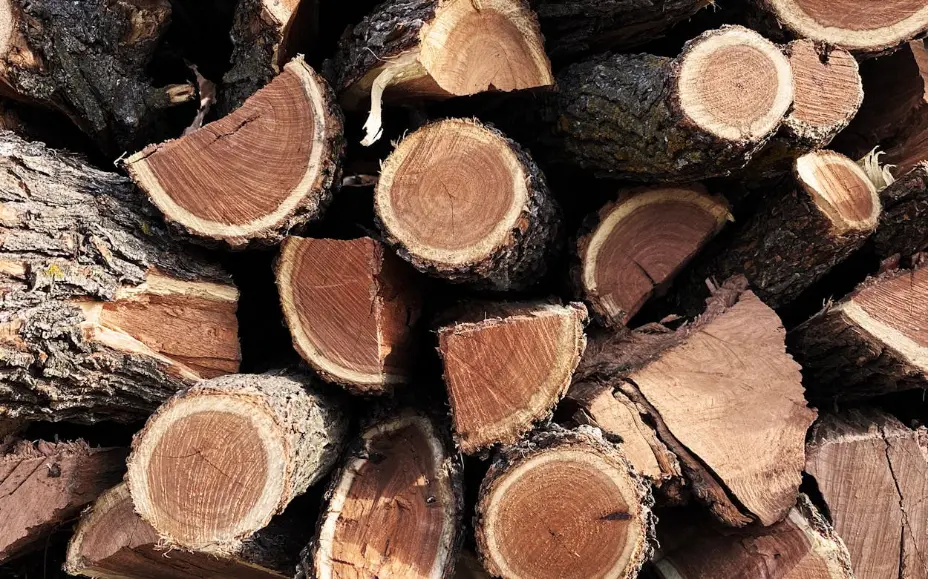
As previously explained about the introduction of generic and associate materials, generic material refers to common materials frequently used in the production of various types of furniture. Below is the process of creating generic material in the Odoo system.
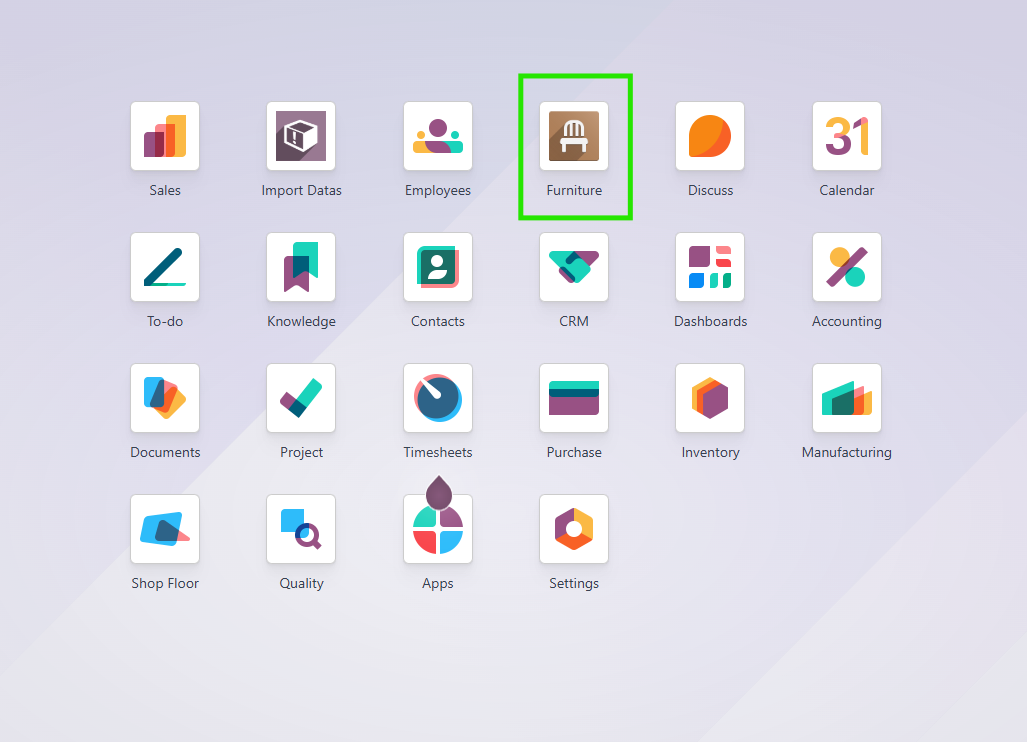
The Odoo Main Menu
In the main menu of Odoo, select the Furniture menu.
Generics Menu
After entering the Furniture page, there is a Generics tab where we can select Generic Material to access the Generic Material section.

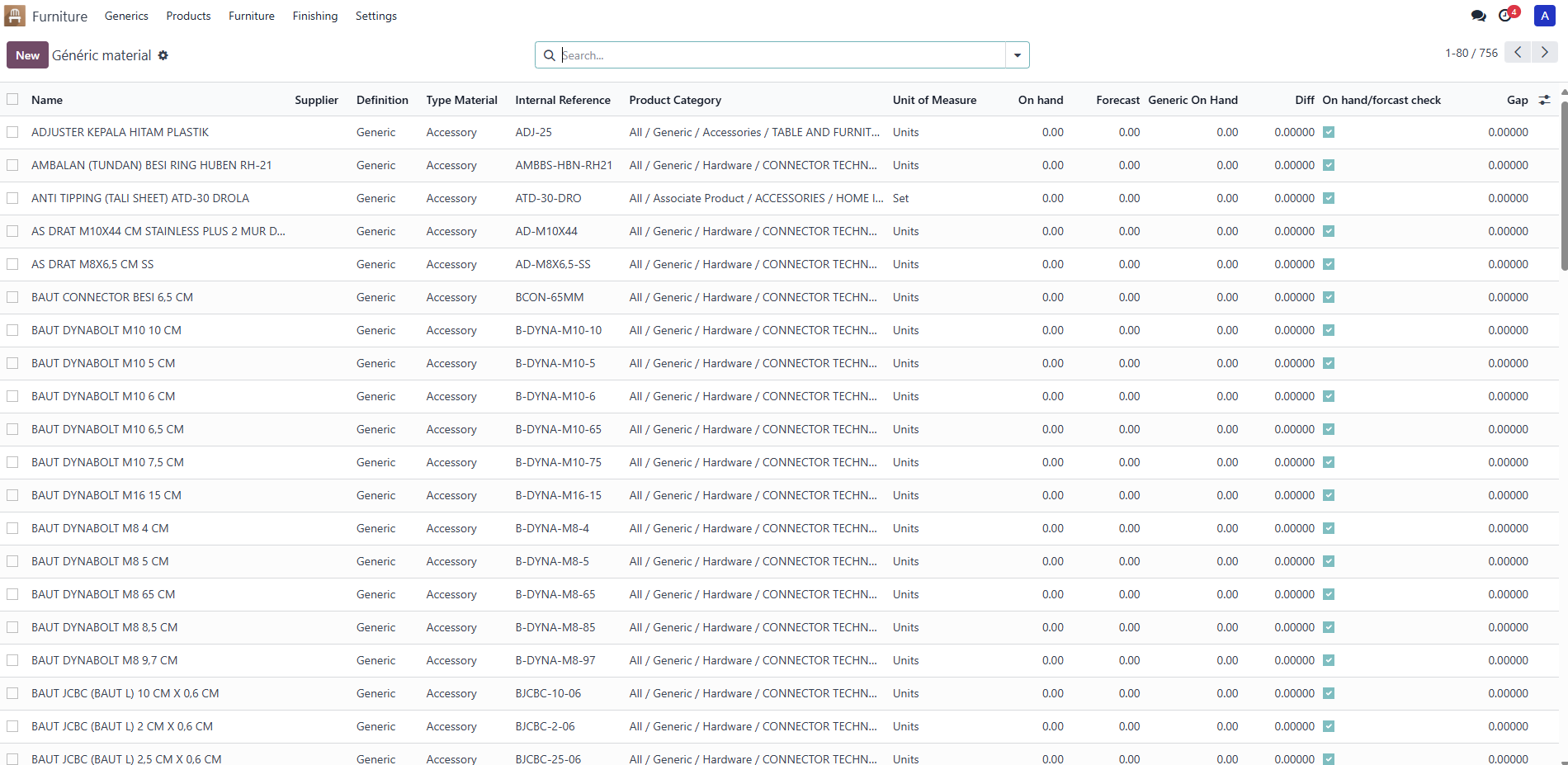
List of Generic Materials
After entering the Generic Material page, you will be able to see a list of the generic materials that have already been created.
Above the material list, you can create a new generic material by clicking the New button. After that, you will be directed to a form to complete the generic material data. Below is the appearance of the generic material form.
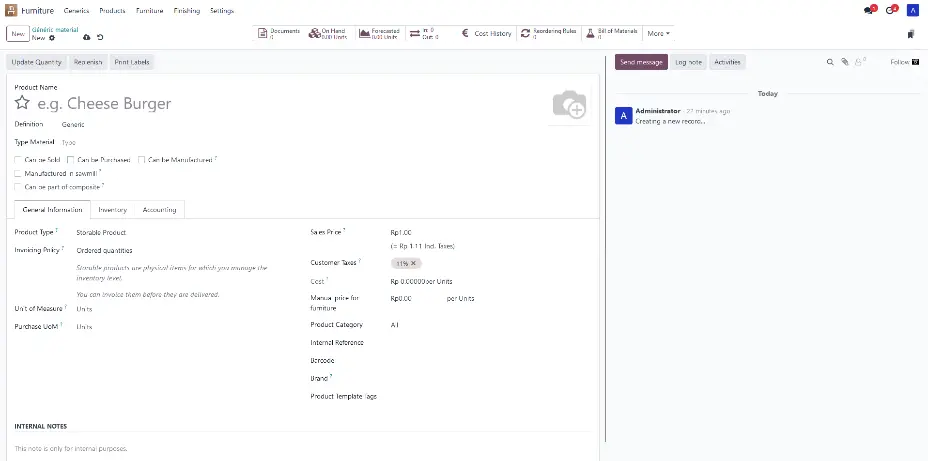
Generic Product Form Overview
The Generic Product Form is used to create and manage materials within the system. This form allows you to define and categorize materials that are commonly used in the production of various furniture items. Key fields in the form include
1. Product Name
- Description: This field is used to give a name to the generic material product. The name will appear in the product list and will be used for further identification throughout the system. The product name should be clear and descriptive to make it easy to categorize and search for the product within the system.
2. Product Type
- Description: This field indicates whether the product is a consumable, semi-finished goods, or other materials used in furniture manufacturing. this product type as default be set to Storable Product.
3. Product Category
- Description: The Product Category field is used to globally categorize the generic material products within the system. It helps organize the products into broader groups, such as Furniture, Raw Materials, Finished Products, etc. This field is used for more general classification and reporting purposes, such as sales, inventory, and procurement processes.
4. Type of Material
- Description: The Type of Material field is used to specifically identify the material's nature. This classification allows you to categorize the product based on the material type, such as Wood, Metal, Plastic, Accessories, and others. This is a more specific categorization that impacts how the product is used in manufacturing and assembly processes.
5. Can Be Manufactured
- Description: This field indicates whether the generic material product can be manufactured. If this product is involved in the production process, this option should be checked. It is important to determine whether the product can be created during the manufacturing process or is just used in the supply stage.
6. Unit of Measure
- Description: This field is used to define the unit of measurement for the generic material product. Common units of measure include meter (m), kilogram (kg), liter (L), etc., depending on the shape and size of the material.
7. Internal Reference
- Description: This field allows you to assign an internal reference for the generic material product. This is a unique code used to refer to the product in internal processes such as procurement, production, or inventory reporting. This reference helps in easy identification and searching of products within the system.
Adding Product Measurement (Optional)
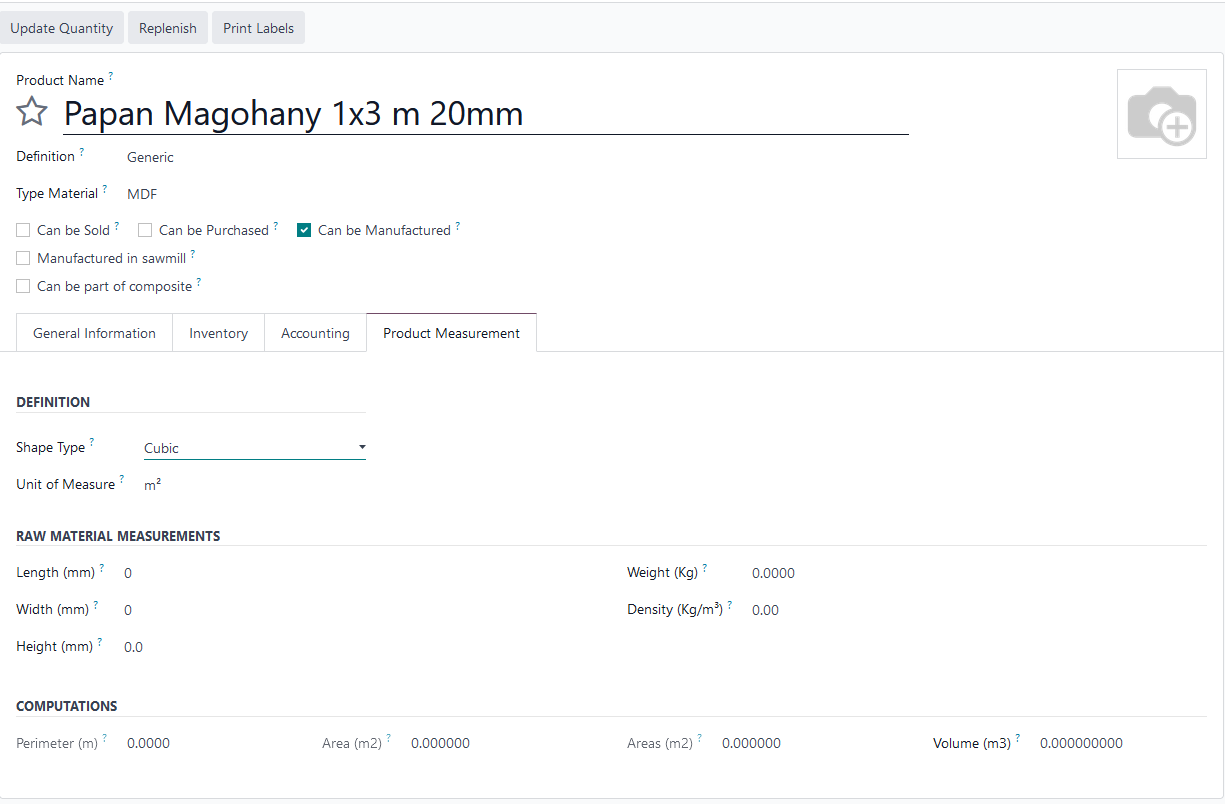
In the Generic Material form, you will notice a Product Measurement section or tab. While this section is optional, it can provide valuable information regarding the shape and size of the material, allowing for more precise management and usage. The measurements displayed will vary depending on the Shape Type selected for the material.
Below are the specific fields that will appear based on the shape type chosen:
1. Cubic
For materials in a cubic shape, the following measurements will be available:
- Length (mm)
- Width (mm)
- Height (mm)
- Weight (kg)
- Density (kg/m³)
2. Cylindrical
For cylindrical materials, the following measurements will be shown:
- Length (mm)
- Diameter (mm)
- Weight (kg)
- Density (kg/m³)
3. Volume
For materials categorized as volume-based, the following fields will appear:
- Volume (liter)
- Weight (kg)
- Density (kg/m³)
4. Cubique Pipe
For materials that are cubique pipes, the form will include the following measurements:
- Length (mm)
- Width (mm)
- Height (mm)
- Pipe Thickness (mm)
- Weight (kg)
- Density (kg/m³)
5. Cylindrical Pipe
For cylindrical pipe materials, the following measurements will be included:
- Length (mm)
- Diameter (mm)
- Pipe Thickness (mm)
- Weight (kg)
- Density (kg/m³)
Here is an example of a generic material that has been created.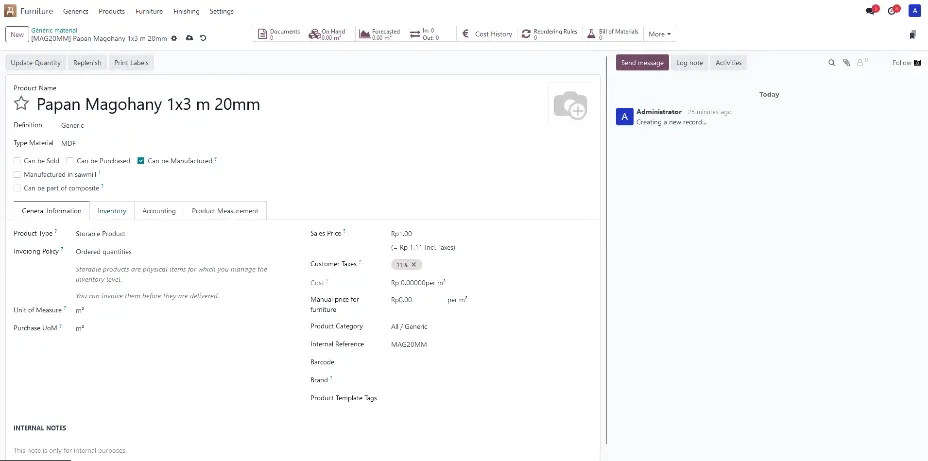
VIDEO TUTORIAL
There are no comments for now.